Why did we need an Arcade Card?
I’ve focused on NEC’s failed attempts to build on the PC Engine before on this blog: the two PC Engines taped together that is the SuperGrafx, and the combo nobody wanted with the LaserActive. So let’s give them a break and talk about a simpler add-on, and one that actually had some success: the Arcade Card! Who, Why, What, Where, and How! Well, not Who. I don’t know much about the people who created it.
Setting the stage
I talked about the Arcade Card (very) briefly in my article about the PC Engine CD-ROM2 system, but let’s talk about it again, looking mainly at video RAM.
The PC Engine has 64kB of video RAM. This is the ram the HuC6260 video display controller (VDC) has access to, and includes the background attribute table (BAT, the equivalent to the NES nametables: the layout of tiles on the screen) and all the 8x8 tiles for the background and the 16x16 tiles for the sprites. The developer has a lot of flexibility in how it’s used, and the system can do fast DMA (direct memory access) to copy data from the HuCard into VRAM when needed. (You can often do it in VBlank intervals) So 64kB wasn’t much of a limit at all, as long as your HuCard was big enough.
The CD-ROM2 system, as introduced in 1988, was hamstrung by one thing: RAM. The Interface Unit had just 64kB of RAM for programs. You can think of this 64kB as the equivalent of a HuCard, and a 64kB HuCard would’ve been very small indeed. Sure, 64kB seems like a lot (it’s nearly twice the size of Aspect Star “N”), but remember, these are CD games that are expected to have a lot of graphics (16-bit graphics take up more space) and sound, large levels, and all sorts of things that pretty rapidly eat up your RAM. In fact, no licensed TurboGrafx or PC Engine HuCard was smaller than 128kB, and that was only used on very early titles.
Transferring data from the CD is slow. It also turns off your Redbook audio while it’s happening, which is why many early CD games like the port of Altered Beast ended up not using Redbook audio in levels (but now you have to fit your music sequence in that tiny 64kB too). This limitation was so severe that CD games often come off looking the same as their HuCard counterparts, such as Side Arms and Side Arms Special.
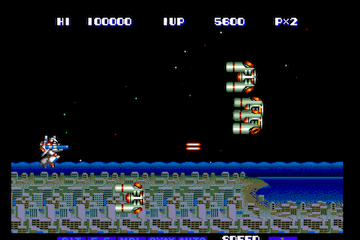

Can you tell which one is the 650MB CD, and which one is the 256kB HuCard? Well you could if the sound was on.
The Super System Card (built into every Duo system) upped the HuCard-equivalent RAM to 256kB. That’s still much smaller than the largest HuCard, Street Fighter II’, which had extra onboard hardware to eke out even more space. It stands out visibly from the pack. But 256kB is nothing to sneeze at. (The Super System Card also was a thicker HuCard, but I don’t actually own one to show you)
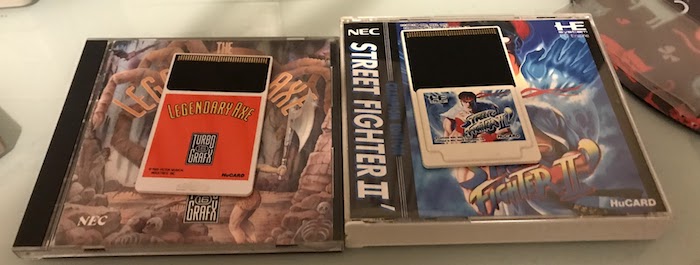
The Super System Card was a rare thing for video game consoles: it was an add-on to an add-on, but it was also a huge success. The majority of PC Engine CD games require it, as will my own in development, Space Ava 201. This was probably made possible by the heavy pushing of the Duo consoles, and the Super CD-ROM2 add-on that includes it onboard.
With the Super System Card, the PC Engine produced some of its finest games: Castlevania: Rondo of Blood, Lords of Thunder, Ys IV: Dawn of Ys, and FX Unit Yuki: The Henshin Engine. It was truly a golden age of 16-bit* gaming.
* - 16-bit graphics card. No refunds.
Why: The Neo Geo
Technology doesn’t stand still. In video games in this period, the high-end stuff going on was happening in the arcades. And if you wanted the arcade to come into your home, there was nothing better than the Neo Geo.
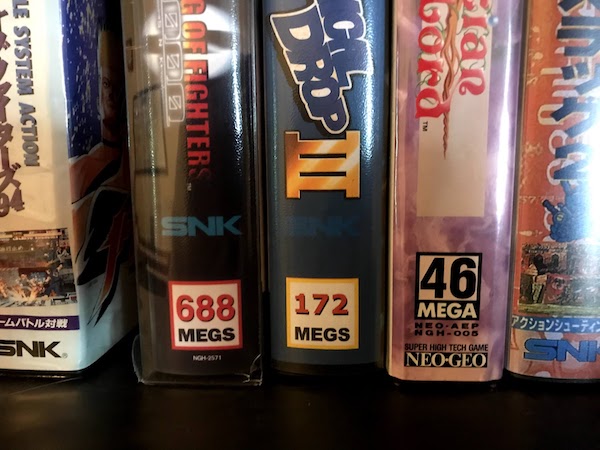
And look how high those numbers are! So many Mega!
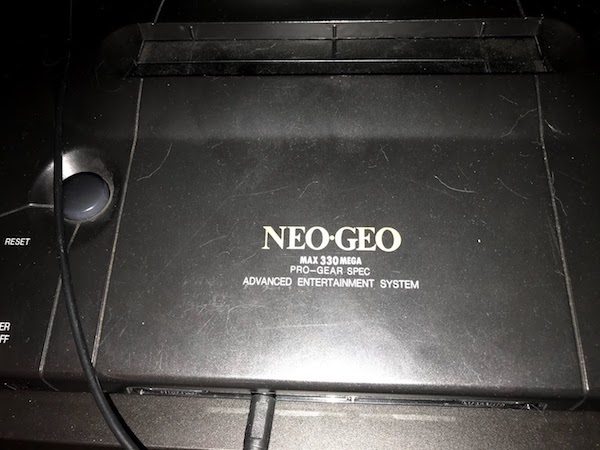
And what does “Max 330 Mega” mean anyway?
330 Mega means, in this case, Megabits of ROM. The Neo Geo games all ran from ROM cartridges that were by standards of the time unfathomably huge; 1993’s Street Fighter II’ for the PC Engine was a 20 Megabit HuCard, the largest on the console. (The Genesis version was 24 Megabits) Magician Lord, a 1990 launch title that was quickly overshadowed, has a 46 Megabit cartridge.
That being said, the 330 MEGA was definitely a marketing slogan. Not only was that limit surpassed through use of bankswitching on later games (like The King of Fighters 2000), the marketing of megabits ended up encouraging developers to waste a lot of space. Arcade games were made to make money, so if it being a little more expensive made it more appealing to the masses’ quarters, it was worth it.
So let’s look at the Neo Geo CD. (I don’t have one of those either) This was a home system only, which shared the Neo Geo’s graphics and sound hardware, but replaced the hefty cartridges with onboard RAM, and loaded the data from the CD as needed. Because there was so much data, this system became known for awful loading times. It dedicated 4 MiB (32 Megabits!) to video RAM. Loading all that on a 1X CD-ROM drive definitely took some time.
The PC Engine Meets the Neo Geo CD
So what happens if you apply the same logic to the PC Engine? You can’t expand the VRAM of the console, but you can take advantage of those fast DMA transfers, and create a card with oodles of RAM (16 Megabits, 2MiB, half of the Neo Geo CD), optimized not for data and not directly mapped into the HuCard address space, but instead for video transfers. Oh, and do all this six months before the Neo Geo CD was released.
Behold: The Arcade Card.
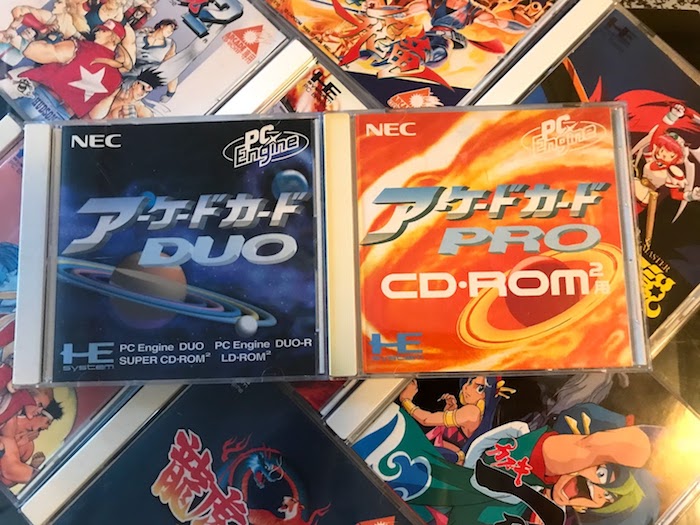
Where do I put this card?
Well, Arcade Cards, as it turns out. The problem is that the PC Engine can only have one HuCard at a time. If you have a Duo system, you only need the 2MiB of Arcade Card RAM. But if you have an older one, you always need a System Card in, because that’s where the CD BIOS lives. Therefore, you need a BIOS, and you need the 192kB of Super System Card RAM.
The Arcade Card Pro, which had the BIOS and the extra RAM built in, didn’t update the BIOS of the PC Engine CD, and it remained at Japanese version 3.00. (We’ll talk about that BIOS in another post) Therefore, for a Duo owner, that would’ve just been a wasted expense, so they released the Arcade Card Duo.
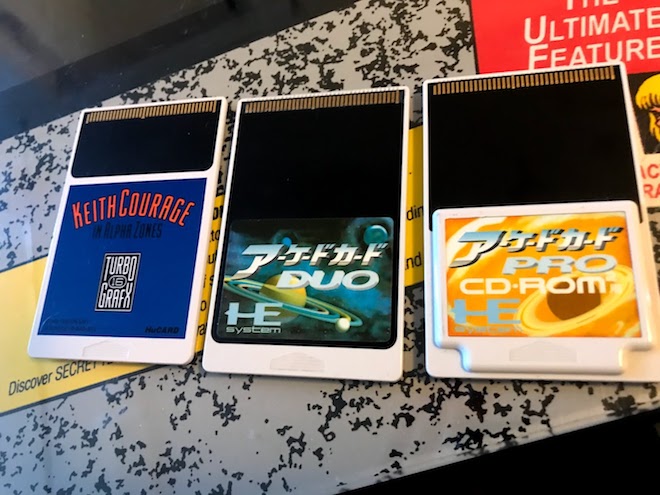
You can see that the Arcade Card Duo is thinner than an Arcade Card Pro, and fits in the same footprint as a standard HuCard, like Keith Courage in Alpha Zones. But remember that the black part of the HuCard is where the PCB is; the rest is all plastic. The circuit board of the Arcade Card Duo is actually quite large, for a HuCard.
As an aside: I can’t find teardowns of these cards anywhere online, but I’m reluctant to sacrifice working cards for that purpose. (These aren’t made anymore, and they aren’t super cheap) Please let me know if you can find any information on how they look internally or the PCB layout, I’d be very curious to know.
LaserActive users beware
Now, I said that getting an Arcade Card Pro when you have a Duo console is just wasted expense. The LaserActive PAC N-1 also has a Super System Card built in, but as a LaserActive owner, you probably don’t care much about wasted expense. Should you get the Arcade Card Pro?
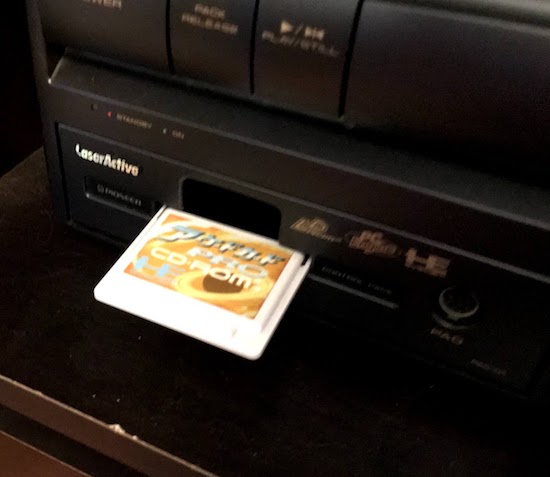
No, you shouldn’t. The Arcade Card Pro is just a hair thicker than the other thickest cards I have, Street Fighter II’ and Tennokoe Bank. (I should get some calipers to measure it) This is enough that not only could I not fit it in the slot far enough to make contact, I had to physically disassemble the PAC to get it out. Just get the Arcade Card Duo, you’re not that special.
As an aside, no LaserActive games require or use the Arcade Card. But I don’t necessarily see any reason why they couldn’t; if you have access to a LaserDisc printing plant, I definitely recommend you make one.
Turbo Duo users sigh
The North American market TurboGrafx and Turbo Duo consoles use HuCards that have a reversed data bus from the Japanese one. (The most significant bit is the least significant bit, and vice versa) I’ll go into more detail on this in a later blog post, but basically, any ROM data would show up backwards.
Therefore, you might wonder: the Arcade Card Pro will definitely not work, but if I have a working Turbo Duo, could I use the Arcade Card Duo? If it’s just RAM, surely it might work? It can just use the Turbo Duo’s BIOS after all.
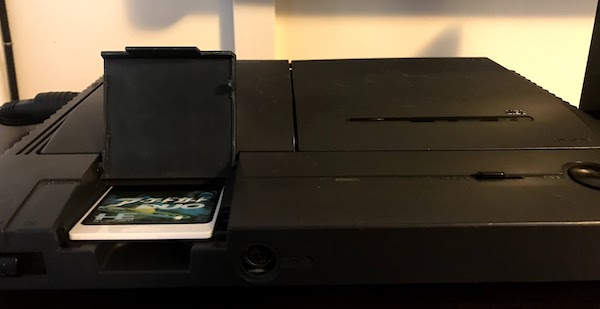
No, it doesn’t work. The Arcade Card’s RAM isn’t directly connected to the address space of the HuCard; there are a number of control registers. Unfortunately, a reversed data bus would break those, and simply wouldn’t work. Therefore, the special address to detect whether the Arcade Card is present returns a value 0x51– in binary, that 01010001. A reversed data bus would be detected pretty quickly.
That being said, you could in theory, knowing that all the data buses are reversed, make a Turbo Duo game that could use a Japanese Arcade Card Duo connected without any adapter. However, I don’t know why anyone would do this, since you’d still need to use a Japanese Arcade Card. Presumably if a US Arcade Card had ever been made, it would’ve handled this problem more elegantly.
How did games use it?
So now we get into the interesting part of the blog post. With all this extra space, what did games do with it? Let’s go take a look!
3x3 Eyes

3x3 Eyes is a digital comic based off of the manga of the same name. It came with a VHS tape; shockingly, NEC never released an add-on to run games off of VHS tapes directly (or it definitely would get a blog post here), so it instead came out on a CD-ROM alongside the VHS tape, which featured an OAV of the series.
So, you might notice that this has both the triangular Arcade CD-ROM2 logo, and the Super CD-ROM2 logo. What’s going on here? Well, let’s compare it to a game that only has the Arcade logo:
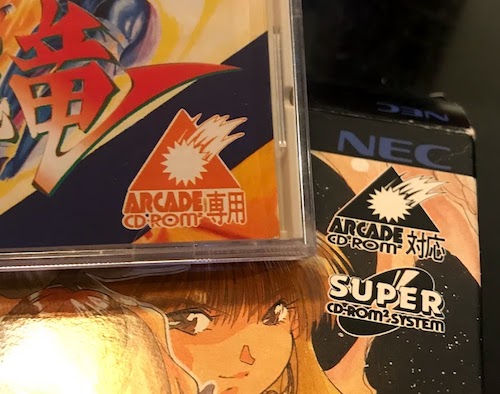
For those of you who don’t speak Japanese, I’ll translate. Strider says “ARCADE CD-ROM2 専用”, the kanji being “senyou”, or “required”. 3x3 Eyes says “ARCADE CD-ROM2 対応”. That’s “taiou”, or “compatible”. This game doesn’t require the extra space, but can use it if it’s available. So what do you get?

You get a loading screen! This is Arcade CD-ROM2 exclusive; without the Arcade Card, this game just boots right up. However, the reason for the waiting is that it loads the entire opening animation all at once. This allows it to go without loading pauses, and so can use Redbook audio to give higher-quality voice acting. The Super CD-ROM2 system users have to put up with pauses to load, and ADPCM sound effects for speech, which are limited to 32kHz (and I think are actually lower than that here, but I didn’t measure).
Since this is a digital comic, loading better quality assets is actually a pretty good deal.
Magical Fantasy Adventure: Popful Mail
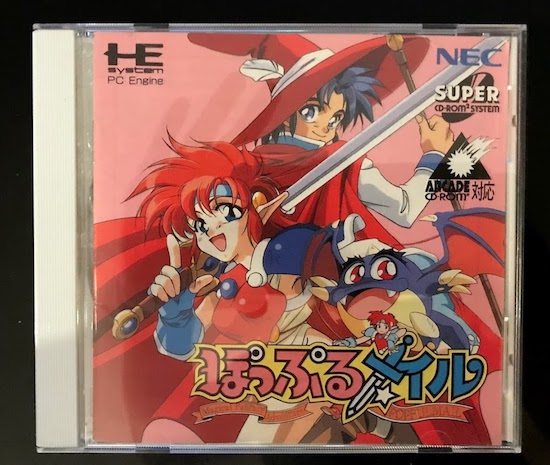
This is a great game; an action platformer by Falcom. While I do find the Sega CD version a bit more fun, this one is much more true to the original game, which was released for Japanese PCs. It’s also another Arcade CD-ROM2 対応 game.
So, when playing this game, it’s hard to see any real difference whether the Arcade Card is inserted or not. (I’m testing using the Arcade Card Duo, since this is all on my PC Engine Duo R) Unfortunately, there’s just no way to rip out the RAM in real time to confirm whether it’s even using the Arcade Card, or is just on there for marketing purposes. Or is there?
For this, we’re going to turn to an emulator. Specifically, my emulator of choice is Higan. It has a nice feature that allows it to dump the Arcade Card RAM (listed as “HuCard DRAM”) to a file to be observed. Let’s give it a try!

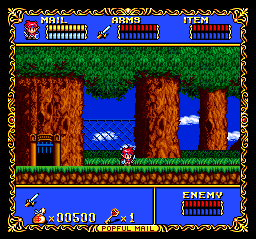
And now we can dump the RAM, and load it up in a graphics editor of our choice; like for NES graphics creation, I use YY-CHR. I’m only going to show a snippet because 2MB is actually quite a lot of RAM.
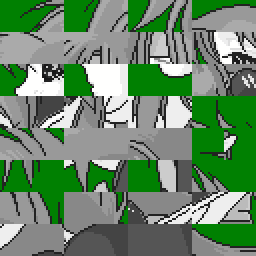
And there we go, it is in fact using the Arcade Card! This snapshot was taken during gameplay, but features Mail’s running sprite. It’s likely that the Arcade Card was primarily used for caching during the cinematics; unfortunately, this game does such a good job of masking loading times on the Super CD-ROM2 alone I must have missed it.
Ryuuko no Ken
Now we’re moving into the real world. A real world where games require the Arcade Card. A real world where our games are so real, the English translations also require exclamation points at the end. Art of Fighting! If you don’t shout it, you’re saying it wrong.

Art of Fighting, Ryuuko no Ken in Japan (“Fist of the Dragon and Tiger”), is a Neo Geo fighting game released in 1992. And the PC Engine port is actually one of the more interesting games on the console: the Neo Geo game zooms in on your fighters as they fight, which takes advantage of the console’s advanced scaling hardware.
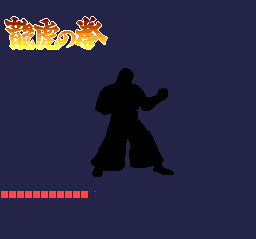
But first, a loading screen. These are not too common of an issue on the PC Engine CD; sure, it has to load data on a 1X CD drive just like the Neo Geo CD, but there also is a lot less data to load. The Arcade Card eliminates that “advantage”.
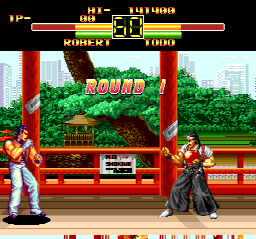
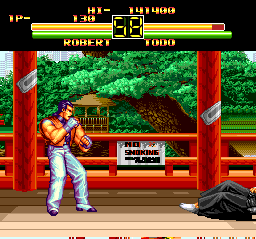
Shockingly, though the PC Engine has no scaling hardware, they managed something pretty close. The PC Engine has a few graphics modes, and the size of a 16x16 sprite on screen will be different depending on the screen width. This game uses that and some other tricks to get something that is definitely not as smooth as the Neo Geo, but very impressive for the day.
A fun thing about the higan emulator is that due to the focus on accuracy of its developers, its screenshots are pixel-perfect. That means it needs to find a common multiple of all the graphics modes in the image. For most games, they just use a single graphics mode at any time, and it’s fine. For Art of Fighting!, this can get a little silly:

And you can see graphics data in the HuCard DRAM data dump. It’s pretty hard to line up the graphics here, but I could at least find the “ROUND 1” font.
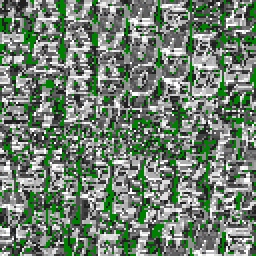
Quest of Jongmaster
Quest of Jongmaster is a Mahjong game. I don’t actually know how to play mahjong (I keep meaning to learn…), so obviously I couldn’t play this for long. It was released for the Neo Geo MVS, and was an 82 megabit game. But it still surprised me that a mahjong game would require the Arcade Card.

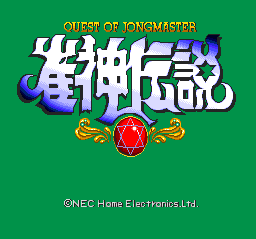
The plain black loading screen and generic title screen didn’t help, but this game actually has quite a lot of art:
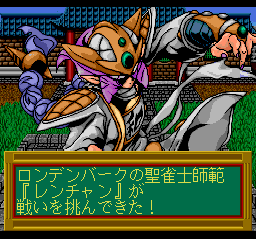
Still mahjong though.
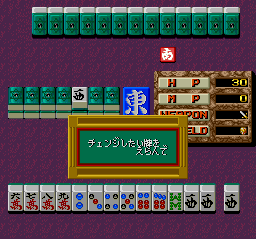
The Arcade Card has nearly all the game’s graphics in it, it seems. You can even see the title screen in this shot taken during the mahjong segment
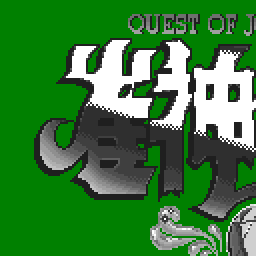
This gives it a more arcade experience with all the full-screen graphics and sound that load in rather quickly (after the initial black screen); definitely what you’d expect from an arcade mahjong game. If you’re the sort of person who plays arcade mahjong games.
Ginga Fukei Densetsu Sapphire
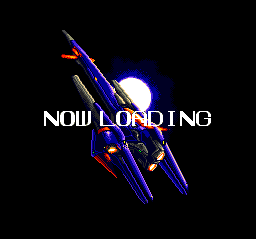
Let’s face it, if this game didn’t exist, prices for the Arcade Card on the secondary market would be about half of what they are. Because this is the one everyone wants to play, and for good reason. The last great shooter on a console known for great shooters, Ginga Fukei Densetsu Sapphire is about a time-traveling all-women police force. And for a PC Engine game, it just looks great.
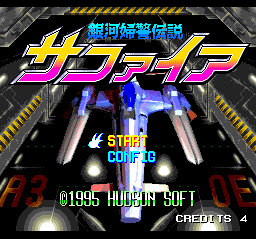
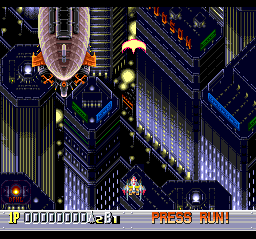
It’s a pretty fun game. And I definitely recommend doing a data dump and scrolling through the memory too yourself to see how they did it. As it turns out, sometimes things just line up:
Very satisfying.
The Arcade In Your Home
The Arcade Card wasn’t the most successful PC Engine peripheral; that honor has to go to the Super System Card, as the last Super CD-ROM2 game not only came out after every Arcade CD-ROM2 game, but also after every PC-FX game too. But it got a decent library of its own; I’d say there are definitely games worth playing.
At the current time, I have no plans to support the arcade card in Space Ava 201. However, it might be worth looking into making a “compatible” feature to reduce loading times. What do you think?
